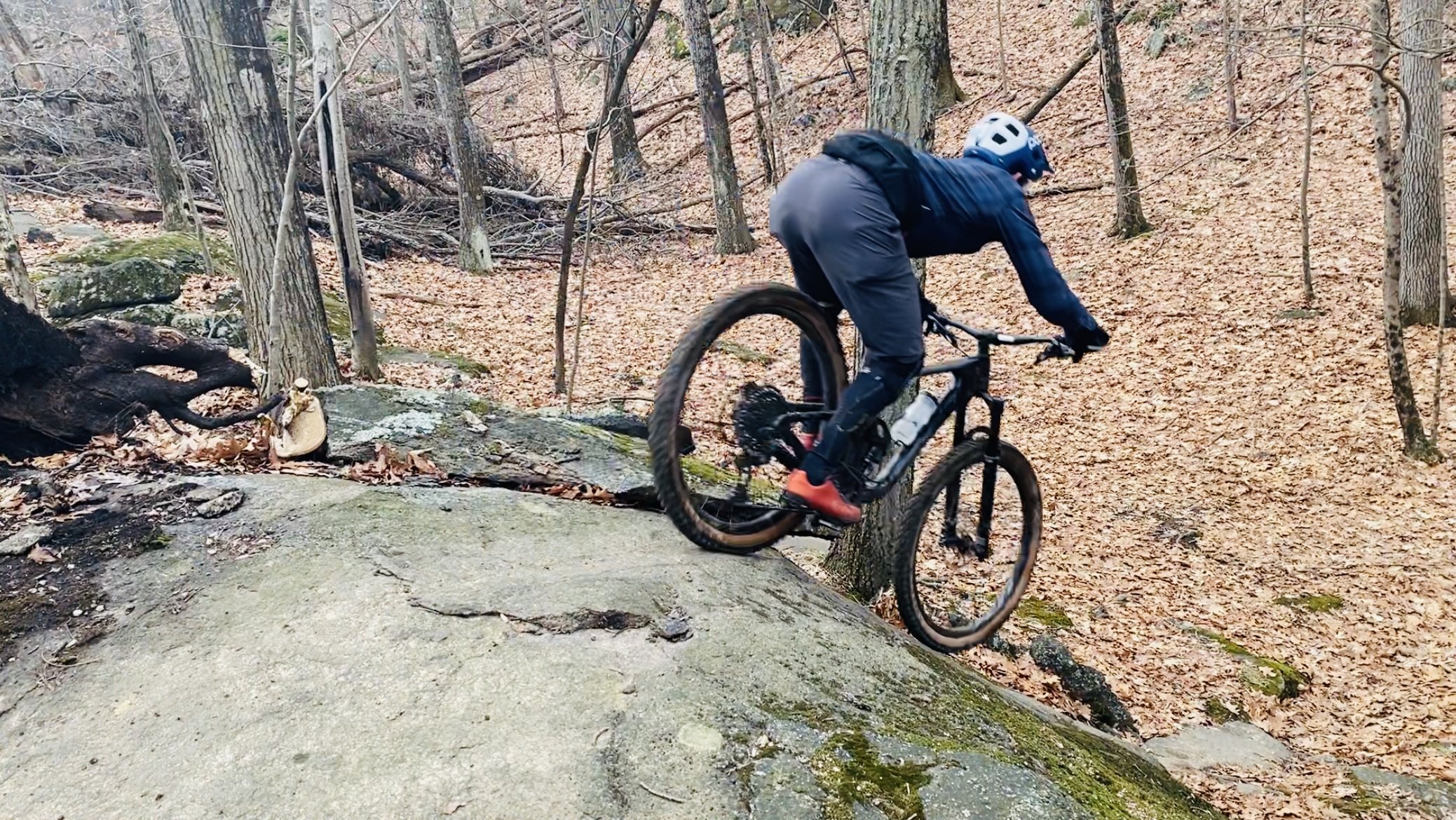How much do you hit the brakes?
Spotted: an author on the trails
The trails of New York’s Blue Mountain in Peekskill are riddled with bumps and rocks, unexpected holes and trees that appear “suddenly” in your path. If you watch the best mountain bikers ride down them, it seems like an effortless flow. They allow their bikes to move fluidly with the terrain — barely using their brakes. Watch beginner bikers though, and you see something very different. Their bikes could absorb the trail, but they are too fearful to let them. They clutch their brakes constantly, bodies rigidly pushing back on the bike to minimize any movement. In fighting the terrain, they occasionally stop the bike so hard they fly over the handlebars.
I’m familiar with the experience!
Life is like these trails: uneven and unpredictable terrain. It’s normal to encounter obstacles. The more we want to achieve, the more obstacles we will encounter. The good news is that we are equipped at birth with a flexible suspension in the form of our emotions, which enable us to move with the challenges we meet. Emotions come from the same Latin root as motion — they move us.
The bad news is most people live life clutching their brakes, to stop their emotions.
Two emotions in particular have people reach for the brakes: anger and sadness. Partly the resistance is that these emotions are unpleasant. Who enjoys feeling sad? But the bigger issue is that we’re frightened of them. Most people are trained from a young age to see them as dangerous. You can see that in the language: “Stop being a crybaby”, or “I’ll give you something to cry about” is a concise form of how most people are taught to suppress sadness. Anger gets a bad rap too. It’s seen as “losing your shit” or being an asshole, because we don’t distinguish between being angry — the emotion — and being aggressive, which is the result of mishandling the emotion.
It’s vital for us to feel these emotions rather than suppress them. Anger emerges out of a desire to protect ourselves from loss, and generates energy for us to help or to harm. Notice what happens when you don’t want to feel your anger. Does it go away? Not in our experience. It turns into low grade stress and hostility where we blame someone else for “making us mad”. More profound still is sadness. If we hit the brakes on our sadness, we cannot experience the sense of peace that comes with fully incorporating a loss. Likely you know someone who has lost something of value — a job, a promotion or worse, a loved one — and they seem to keep spinning their wheels about the loss, unwilling to let their sadness be fully felt.
Everywhere you look, convention derogates anger, sadness and associated feelings as “bad”. Even social psychologists persist in using the phrase “negative emotions”, a term that most of us simply hear as “bad”. This pervasive denigration just reinforces how wrong we are to even have these emotions when we have them. And if you think you’re wrong to have the emotions you have, then you’ll do whatever it takes to stop yourself from feeling them.
The only way out of this is to stop buying the convention. Just because we were taught something, does not mean it’s true. You’ll need to start paying more attention to the insidious way language causes our thinking.
Here are a few prompts:
When someone says “Oh she got so emotional”, consider asking what that even means. On the face of it, that’s an absurd statement, like saying, she got so human. Which emotion? What’s the harm in that emotion?
When someone advises you to “compartmentalize your emotions” consider asking which compartment they think they put them in, and whether that’s really working for them.
When someone says “I just want to move on [from feeling sad]”, consider asking (gently) what time limit they’ve assigned to feeling what they feel, without being judgmental.
Imagine a future in which you release the grip on your brakes, and allow yourself to feel uncomfortable emotions without getting scared. Imagine easily moving through setbacks, centered, and rebounding to the sheer joy of feeling alive — inspired to take on bigger challenges with the enthusiasm and passion that are there for you if you would release them.
That’s the future we help our clients make. Schedule a call if you’d like to know more.
To the ride of your life,
Tom and team

